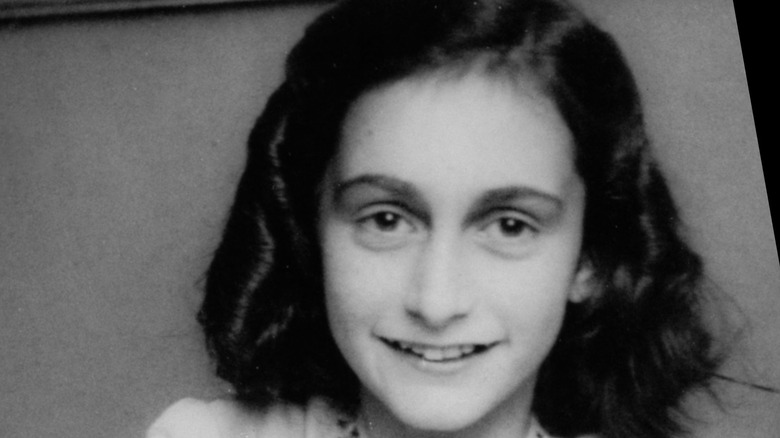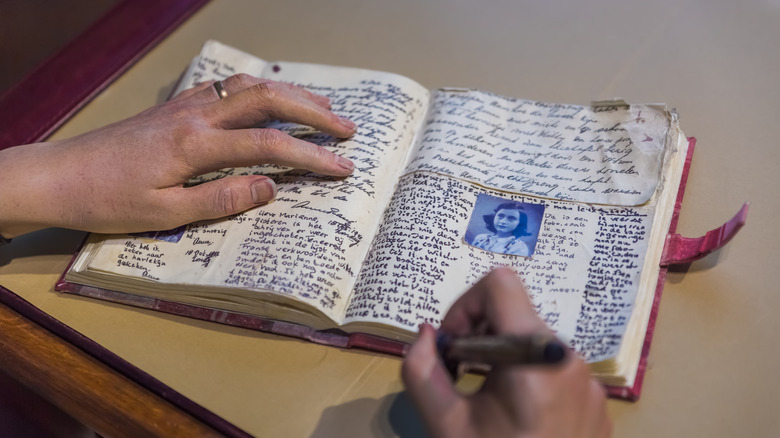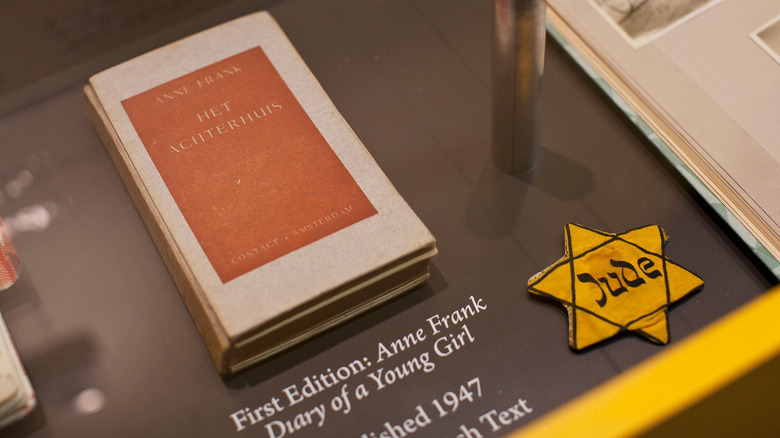All About Anne Frank's Less Popular Second Diary
Anne Frank's diary is one of the most famous diaries in the world, with more than 31 million copies sold since it was published in 1947 with the help of her father, Otto Frank. The diary has been translated into 67 languages and details Anne's daily life as well as her experiences while her family was in hiding from the Nazis in Amsterdam (via Publishing Perspectives).
Anne Frank received a diary for her 13th birthday on June 12, 1942, and the first entry was dated a couple of days after her birthday. She wrote countless entries in her diary for two years, and the last entry was dated August 1, 1944, per the Independent, just a few days before she and her family were arrested and brought to concentration camps.
Otto Frank returned to Amsterdam in 1945 and was devastated to find out that he was the only survivor in his family. Miep Gies, Otto's former secretary, found Anne's diary and gave it to her father. The bulk of Anne's entries were written in Dutch, with a few English and German words peppered throughout. Otto then decided to translate some entries to send to relatives in Switzerland, per Books Tell You Why. Relatives recognized Anne's talent for writing and convinced Otto that it would be a good idea to share the diary with the rest of the world.
The two versions of Anne Frank's diary
Unbeknownst to many, Anne Frank made two versions of her famous diary. The first version was the one she originally wrote on, but she made a second version of her diary in hopes of having them published in the future. In 1944, per Books Tell You Why, Gerrit Bolkestein, a Dutch exile, talked about wanting to publish a collection of letters and diaries written during the German occupation. The broadcast was Anne's inspiration for making the second version of her diary which she titled "Het Achterhuis" or "The Secret Annex."
Anne Frank started rewriting her diary in May 1944, and there were striking differences between the two versions. For instance, Anne wrote in great detail about her interest in a boy, Peter van Pels, but left out many of their conversations in the second version. Entries about her mother, Edith, also changed in tone. The mother and daughter didn't get along so well, and Anne turned to her diary to vent about their issues, usually using harsh words to describe her mother. In the second version, however, Anne removed some of the entries and rewrote some using kinder words. "The period when I caused Mummy to shed tears is over," she wrote, continuing on to say that their relationship has improved (via Anne Frank.org).
The censorship of Anne Frank's diary
The version of Anne Frank's diary that was published was censored, which caused a bit of controversy. The entries that didn't make it to the published version were mostly about mundane things that Otto decided to leave out because of length constraints from the publisher. However, there were also important entries that weren't included as they talked about Anne's thoughts toward sex and descriptions of her intimate parts (via Today I Found Out).
Anne's original diary consisted of pages of changes that she went through during her puberty, including her private thoughts and detailed descriptions of her genitalia. She also wrote about the intimate discussions she had with Peter van Pelt. The book's publisher, as well as Otto, may have found these details too private to reveal to readers. An entry about Otto, wherein Anne wrote about her father's penchant for talking about farts and going to the lavatory (which Anne thought was "disgusting"), was excluded as well. Critics thought that removing the said entries from the diary was deceitful, as it did not paint a real picture of Anne Frank. One of her cousins, Buddy Elias, said that Anne was just like every other girl and not a saint, therefore there was no need to glorify her and clean her image. Today, there are unedited versions of Anne Frank's diary that exist, but they are banned in most schools as they are deemed inappropriate for children.


